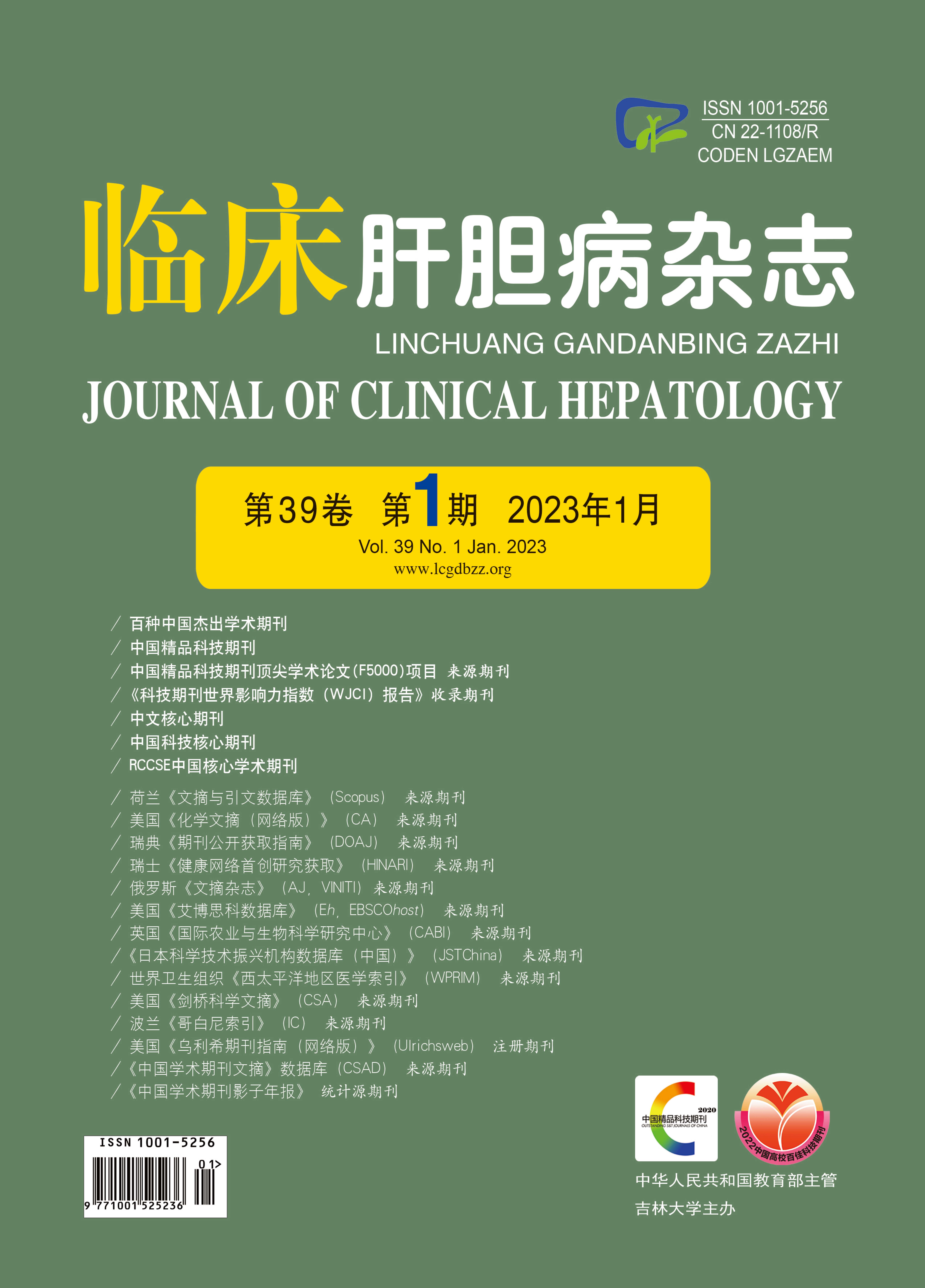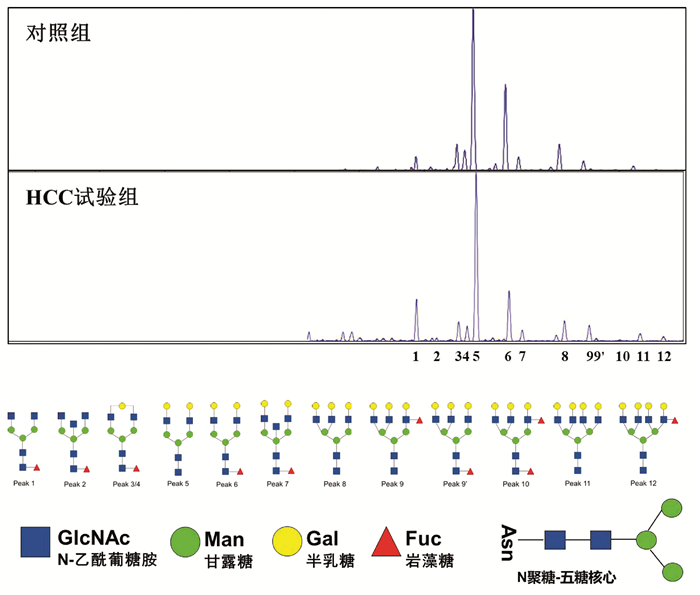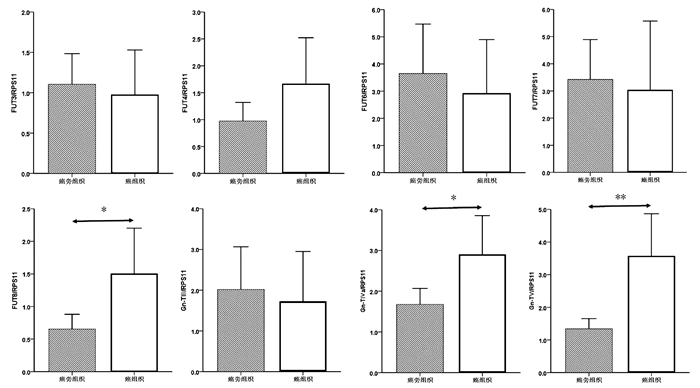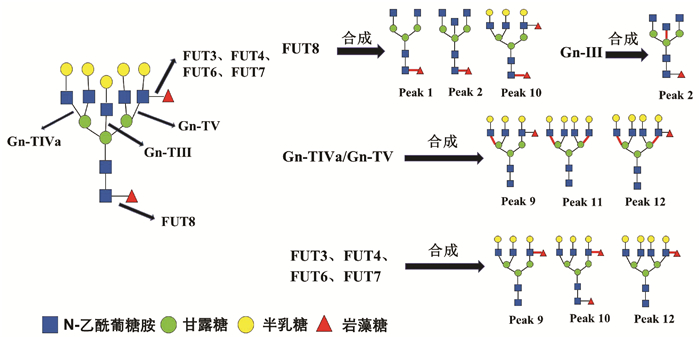| [1] |
CIANCI P, RESTINI E. Management of cholelithiasis with choledocholithiasis: Endoscopic and surgical approaches[J]. World J Gastroenterol, 2021, 27(28): 4536-4554. DOI: 10.3748/wjg.v27.i28.4536. |
| [2] |
LI ZQ, SUN JX, LI B, et al. Meta-analysis of single-stage versus two-staged management for concomitant gallstones and common bile duct stones[J]. J Minim Access Surg, 2020, 16(3): 206-214. DOI: 10.4103/jmas.JMAS_146_18. |
| [3] |
WU Y, XU CJ, XU SF. Advances in risk factors for recurrence of common bile duct stones[J]. Int J Med Sci, 2021, 18(4): 1067-1074. DOI: 10.7150/ijms.52974. |
| [4] |
WANG LM, CHEN C, DING H, et al. Analysis of risk factors for recurrence of cholecystolithiasis after retrograde cholecystectomy with laparoscopic cholecystectomy[J/CD]. Chin Arch Gen Surg(Electronic Edition), 2019, 13(3): 224-228. DOI: 10.3877/cma.j.issn.1674-0793.2019.03.012. |
| [5] |
RYU S, JO IH, KIM S, et al. Clinical impact of common bile duct angulation on the recurrence of common bile duct stone: a meta-analysis and review[J]. Korean J Gastroenterol, 2020, 76(4): 199-205. DOI: 10.4166/kjg.2020.76.4.199. |
| [6] |
KEIZMAN D, SHALOM MI, KONIKOFF FM. An angulated common bile duct predisposes to recurrent symptomatic bile duct stones after endoscopic stone extraction[J]. Surg Endosc, 2006, 20(10): 1594-1599. DOI: 10.1007/s00464-005-0656-x. |
| [7] |
CHONG CC, CHIU PW, TAN T, et al. Correlation of CBD/CHD angulation with recurrent cholangitis in patients treated with ERCP[J]. Endosc Int Open, 2016, 4(1): E62-E67. DOI: 10.1055/s-0035-1569689. |
| [8] |
JANSSEN BV, van LAARHOVEN S, ELSHAER M, et al. Comprehensive classification of anatomical variants of the main biliary ducts[J]. Br J Surg, 2021, 108(5): 458-462. DOI: 10.1093/bjs/znaa147. |
| [9] |
CHOI SJ, YOON JH, KOH DH, et al. Low insertion of cystic duct increases risk for common bile duct stone recurrence[J]. Surg Endosc, 2022, 36(5): 2786-2792. DOI: 10.1007/s00464-021-08563-2. |
| [10] |
TSITOURIDIS I, LAZARAKI G, PAPASTERGIOU C, et al. Low conjunction of the cystic duct with the common bile duct: does it correlate with the formation of common bile duct stones?[J]. Surg Endosc, 2007, 21(1): 48-52. DOI: 10.1007/s00464-005-0498-6. |
| [11] |
LU ZH, NIU J, XU PP, et al. Analysis of related risk factors for recurrence of choledocholithiasis after the operation[J]. Chin J Curr Adv Gen Surg, 2016, 19(5): 372-375. DOI: 10.3969/j.issn.1009-9905.2016.05.011. |
| [12] |
CAO J, LI TY, ZHOU J, et al. The effect of periampullary diverticulum on the stone composition and biliary flora in patients with choledocholithiasis[J]. Chin J Microecol, 2022, 34(3): 300-305. DOI: 10.13381/j.cnki.cjm.202203010. |
| [13] |
SANDSTAD O, OSNES T, SKAR V, et al. Structure and composition of common bile duct stones in relation to duodenal diverticula, gastric resection, cholecystectomy and infection[J]. Digestion, 2000, 61(3): 181-188. DOI: 10.1159/000007755. |
| [14] |
WANG Y, JIE J, QIAN B, et al. Analysis of the relationship between periampullary diverticulum and recurrent bile duct stones after endoscopy on magnetic resonance imaging of magnetic nanoparticles[J]. J Biomed Nanotechnol, 2022, 18(2): 607-615. DOI: 10.1166/jbn.2022.3270. |
| [15] |
YOO ES, YOO BM, KIM JH, et al. Evaluation of risk factors for recurrent primary common bile duct stone in patients with cholecystectomy[J]. Scand J Gastroenterol, 2018, 53(4): 466-470. DOI: 10.1080/00365521.2018.1438507. |
| [16] |
WU RZ. Analysis of related factors of recurrent choledocholithiasis after cholecystectomy and choledocholithiasis[J]. Chin Foreign Med Res, 2017, 15(5): 45-47. DOI: 10.14033 / j.carol carroll nki CFMR. 2017.5.024.
|
| [17] |
|
| [18] |
LUJIAN P, XIANNENG C, LEI Z. Risk factors of stone recurrence after endoscopic retrograde cholangiopancreatography for common bile duct stones[J]. Medicine (Baltimore), 2020, 99(27): e20412. DOI: 10.1097/MD.0000000000020412. |
| [19] |
PARK SY, HONG TH, LEE SK, et al. Recurrence of common bile duct stones following laparoscopic common bile duct exploration: a multicenter study[J]. J Hepatobiliary Pancreat Sci, 2019, 26(12): 578-582. DOI: 10.1002/jhbp.675. |
| [20] |
QUARESIM S, BAlla A, GUERRIERI M et al. Results of medium seventeen years' follow-up after laparoscopic choledochotomy for ductal stones. [J]. Gastroenterol Res Pract, 2016, 2016: 9506406. DOI: 10.1155/2016/9506406 |
| [21] |
CUI ML, CHO JH, KIM TN. Long-term follow-up study of gallbladder in situ after endoscopic common duct stone removal in Korean patients. [J]. Surg Endosc, 2013, 27: 1711-6. DOI: 10.1007/s00464-012-2662-0 |
| [22] |
THISTLE JL. Pathophysiology of bile duct stones[J]. World J Surg, 1998, 22(11): 1114-1118. DOI: 10.1007/s002689900529. |
| [23] |
KUNDUMADAM S, FOGEL EL, GROMSKI MA. Gallstone pancreatitis: general clinical approach and the role of endoscopic retrograde cholangiopancreatography[J]. Korean J Intern Med, 2021, 36(1): 25-31. DOI: 10.3904/kjim.2020.537. |
| [24] |
|
| [25] |
NIJIATIJIANG A, ALIMUJIANG A, ALIDAN A, et al. Efficacy of LC combined with LCHTD in treatment of choledocholithiasis complicated with cholecystolithiasis and the related factors of postoperative recurrence of choledocholithiasis[J]. J Hepatobiliary Surg, 2021, 33(7): 419-422. DOI: 10.11952/j.issn.1007-1954.2021.07.007. |
| [26] |
LYU YH, ZHANG HC, SONG CY, et al. Logistic regression analysis of related factors of stone recurrence after laparoscopic cholecystectomy combined with choledocholithotomy and T-tube drainage[J]. Chongqing Med, 2016, 45(9): 1262-1264. DOI: 10.3969/j.issn.1671-8348.2016.09.033. |
| [27] |
QIU WG, XU J. Analysis of risk factors for postoperative recurrence of gallbladder stones with common bile duct stones[J]. Chin J Gen Surg, 2014, 23 (2): 170-173. DOI: 10.7659/j.issn.1005-6947.2014.02.006. |
| [28] |
XU L, SUN WR, LI Y. Laparoscopic cholecystectomy combined with choledocholithot- omy and T-tube drainage for treatment of choledocholithiasis combined with cho-ledocholithiasis and its influencing factors[J]. J Clin Psychosom Dis, 2021, 27(2): 156-159. DOI: 10.3969/j.issn.1672-187X.2021.02.036. |
| [29] |
AL-HABBAL Y, REID I, TIANG T, et al. Retrospective comparative analysis of choledochoscopic bile duct exploration versus ERCP for bile duct stones[J]. Sci Rep, 2020, 10(1): 14736. DOI: 10.1038/s41598-020-71731-2. |
| [30] |
ZHANG Q, YE M, SU W, et al. Sphincter of Oddi laxity alters bile duct microbiota and contributes to the recurrence of choledocholithiasis[J]. Ann Transl Med, 2020, 8(21): 1383. DOI: 10.21037/atm-20-3295. |
| [31] |
GUPTA N. Role of laparoscopic common bile duct exploration in the management of choledocholithiasis[J]. World J Gastrointest Surg, 2016, 8(5): 376-381. DOI: 10.4240/wjgs.v8.i5.376. |
| [32] |
TAKIMOTO Y, IRISAWA A, HOSHI K, et al. The impact of endoscopic sphincterotomy incision size on common bile duct stone recurrence: A propensity score matching analysis[J]. J Hepatobiliary Pancreat Sci, 2021. DOI: 10.1002/jhbp.1083.[Online ahead of print]
|
| [33] |
HUANG B, CHEN YF, ZHAI M, et al. Comparison of the efficacy of primary suture and T-tube drainage in patients with choledocholithiasis and analysis of influencing factors for postoperative recurrence[J]. Chin J Med, 2021, 56(9): 980-984. DOI: 10.3969/j.issn.1008-1070.2021.09.016. |
| [34] |
WANG X, WANG X, SUN H, et al. Endoscopic papillary large balloon dilation reduces further recurrence in patients with recurrent common bile duct stones: a randomized controlled trial[J]. Am J Gastroenterol, 2022, 117(5): 740-747. DOI: 10.14309/ajg.0000000000001690. |
| [35] |
PARK BK, SEO JH, JEON HH, et al. A nationwide population-based study of common bile duct stone recurrence after endoscopic stone removal in Korea[J]. J Gastroenterol, 2018, 53(5): 670-678. DOI: 10.1007/s00535-017-1419-x. |
| [36] |
LEE SJ, CHOI IS, MOON JI, et al. Optimal treatment for concomitant gallbladder stones with common bile duct stones and predictors for recurrence of common bile duct stones[J]. Surg Endosc, 2022, 36(7): 4748-4756. DOI: 10.1007/s00464-021-08815-1. |
| [37] |
LAN T, CUI NQ. Analysis of risk factors for postoperative recurrence of common bile duct stones[J]. Chin J Surg Integr Tradit West Med, 2016, 22 (6): 538-541. DOI: 10.3969/j.issn.1007-6948.2016.06.005. |
| [38] |
|
| [39] |
FEI J, HAN TQ, JIANG ZY, et al. Primary study on inheritant characteristics in cholelithiasis pedigrees[J]. J Hepatobiliary Surg, 2002, 14(1): 4-6. DOI: 10.3969/j.issn.1007-1954.2002.01.003. |
| [40] |
von SCHÖNFELS W, BUCH S, WÖLK M, et al. Recurrence of gallstones after cholecystectomy is associated with ABCG5/8 genotype[J]. J Gastroenterol, 2013, 48(3): 391-396. DOI: 10.1007/s00535-012-0639-3. |
| [41] |
ZHAO HD, GAO P, ZHAN L. The mechanism of intestinal flora and its metabolites in the formation of cholesterol gallstones[J]. J Clin Hepatol, 2022, 38(4): 947-950. DOI: 10.3969/j.issn.1001-5256.2022.04.042. |
| [42] |
ZHANG Z, XIAO HL, ZHAO YH. Gallstone composition and lipid metabolism can influence the recurrence of common bile duct calculi after ERCP[J]. Chin J Health Care Med, 2021, 23(6): 615-618. DOI: 10.3969/j.issn.1674-3245.2021.06.016. |
| [43] |
LIU QX, HAN W, LI T, et al. Clinical analysis of laparoscopic cholecystectomy combined with choledochoscopy in the treatment of recurrent choledocholithiasis[J]. Mod Med, 2017, 45 (9): 1333-1337. DOI: 10.3969/j.issn.1671-7562.2017.09.026. |
| [44] |
FUKUBA N, ISHIHARA S, SONOYAMA H, et al. Proton pump inhibitor is a risk factor for recurrence of common bile duct stones after endoscopic sphincterotomy - propensity score matching analysis[J]. Endosc Int Open, 2017, 5(4): E291-E296. DOI: 10.1055/s-0043-102936. |
| [45] |
SBEIT W, ABUKAES H, SAID AHMAD H, et al. The possible association of proton pump inhibitor use with acute cholangitis in patients with choledocholithiasis: a multi-center study[J]. Scand J Gastroenterol, 2022 : 1-5. DOI: 10.1080/00365521.2022.2106150. |
| [46] |
RYUICHI Y, TAZUMA S, KANNO K et al. Ursodeoxycholic acid after bile duct stone removal and risk factors for recurrence: a randomized trial. [J]. J Hepatobiliary Pancreat Sci, 2016, 23(2): 132-136. DOI: 10.1002/jhbp.316. |
| [47] |
CHEN X, YAN XR, ZHANG LP. Ursodeoxycholic acid after common bile duct stones removal for prevention of recurrence: A systematic review and meta-analysis of randomized controlled trials[J]. Medicine (Baltimore), 2018, 97(45): e13086. DOI: 10.1097/MD.0000000000013086. |
| [48] |
ENDO R, SATOH A, TANAKA Y, et al. Saline solution irrigation of the bile duct after stone removal reduces the recurrence of common bile duct stones[J]. Tohoku J Exp Med, 2020, 250(3): 173-179. DOI: 10.1620/tjem.250.173. |








 下载:
下载:










 DownLoad:
DownLoad: